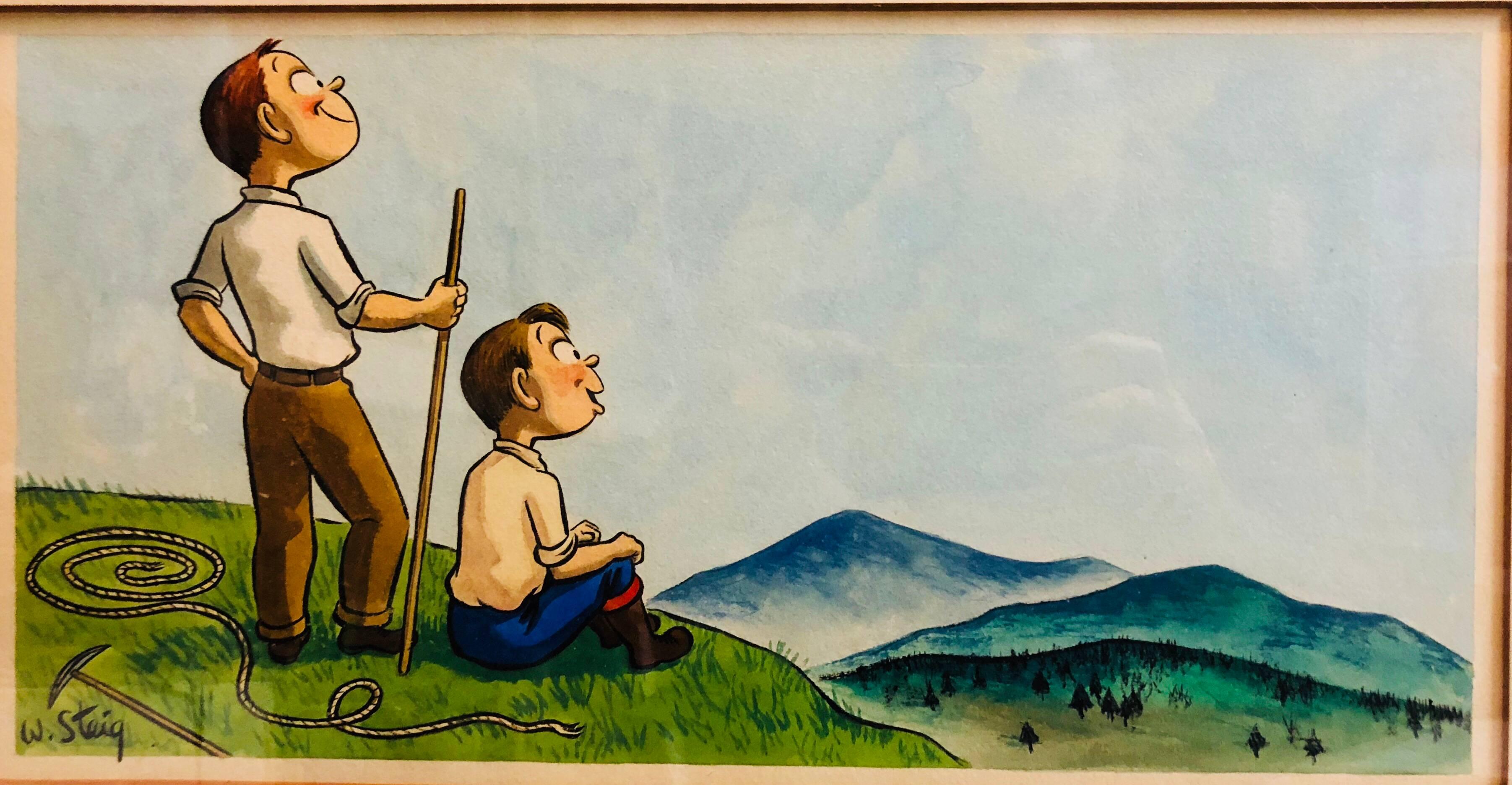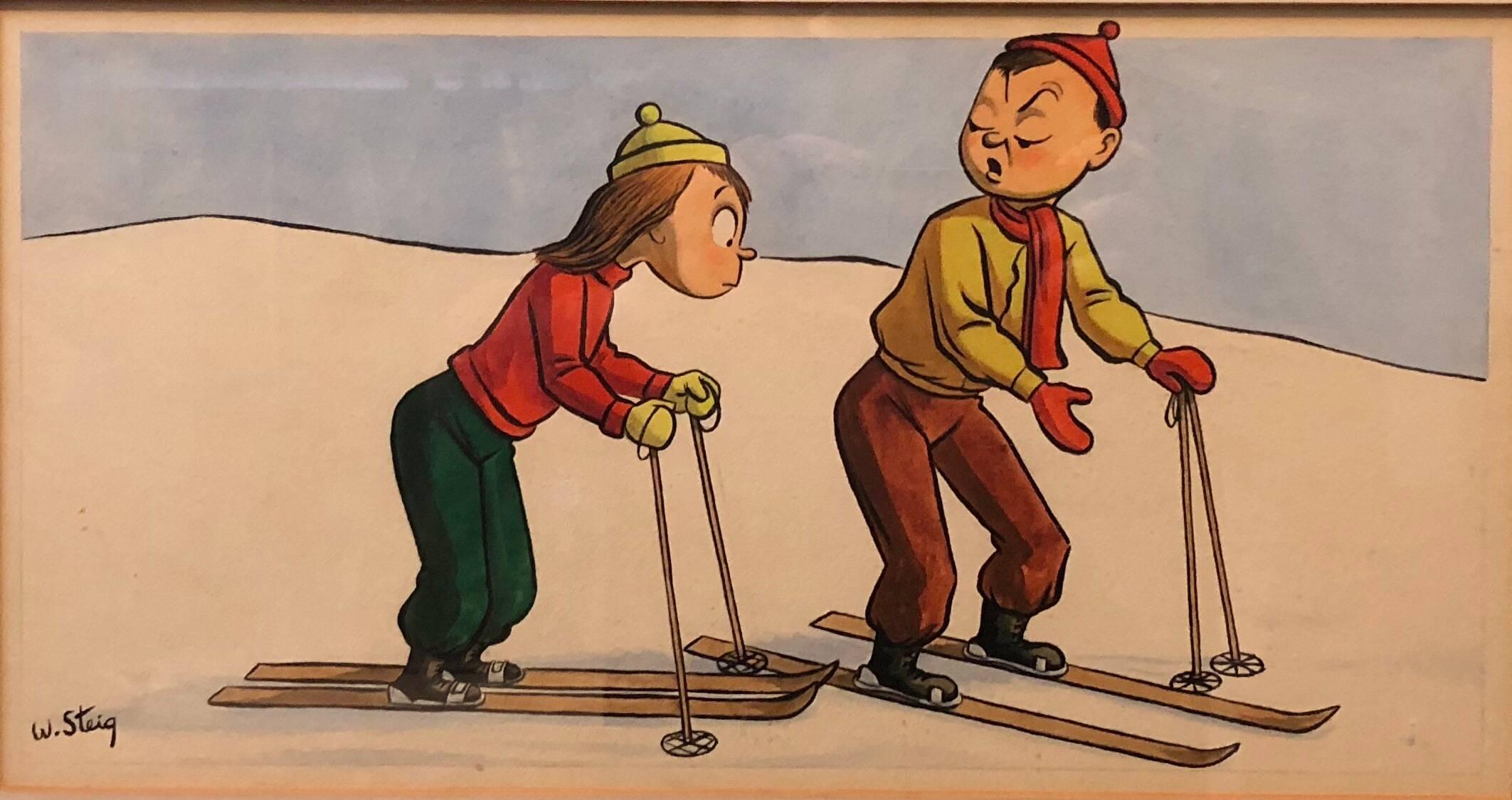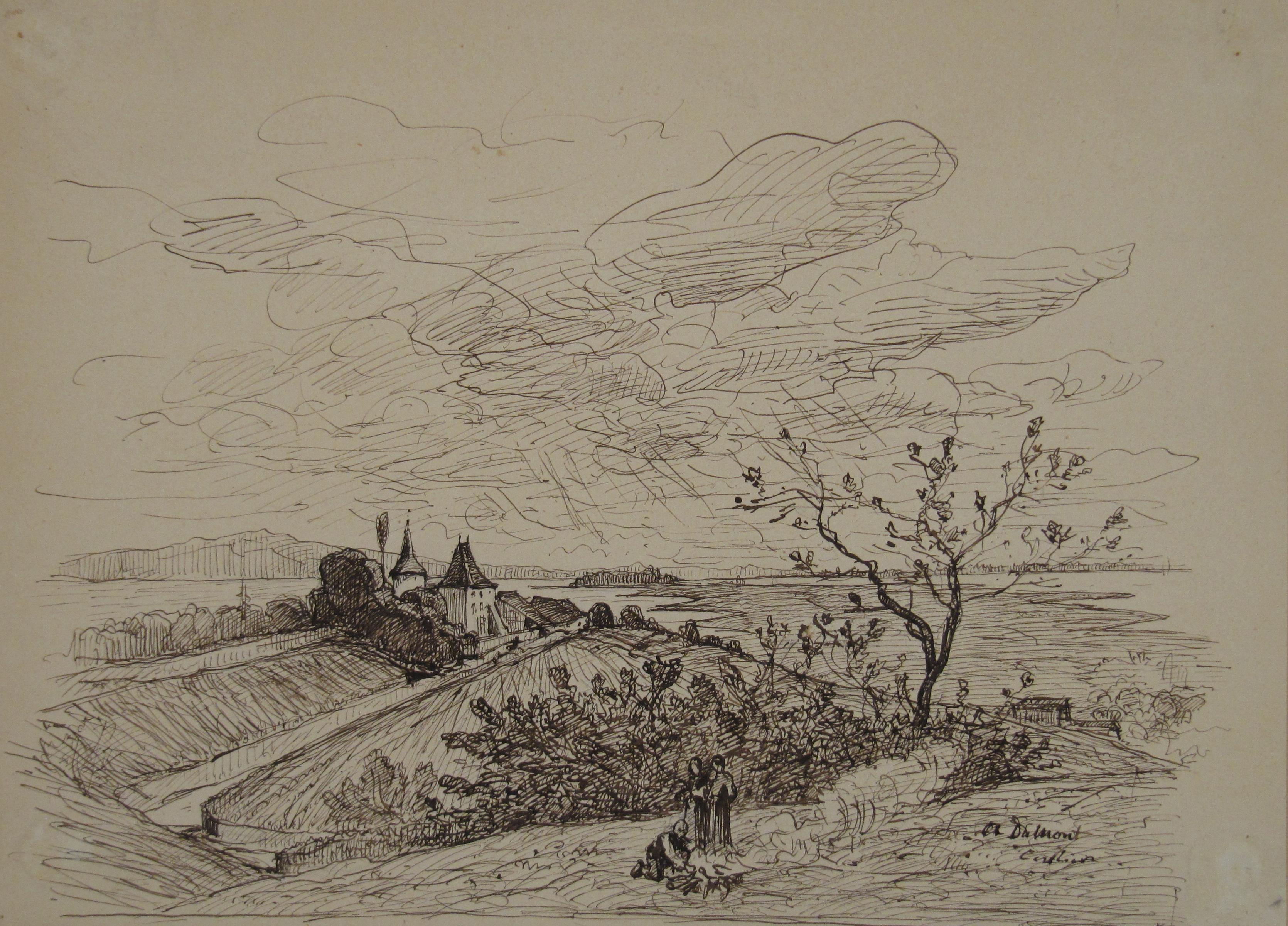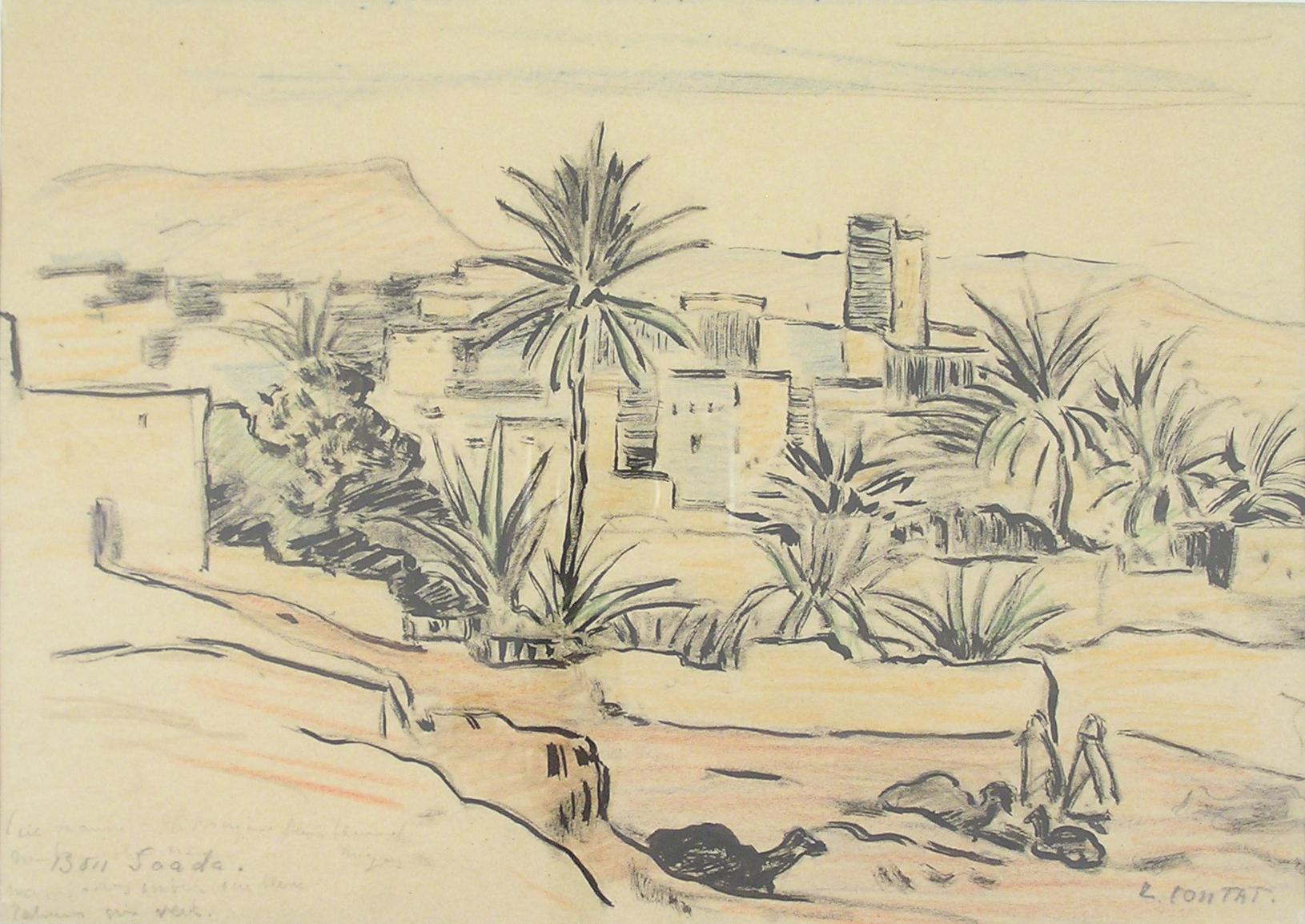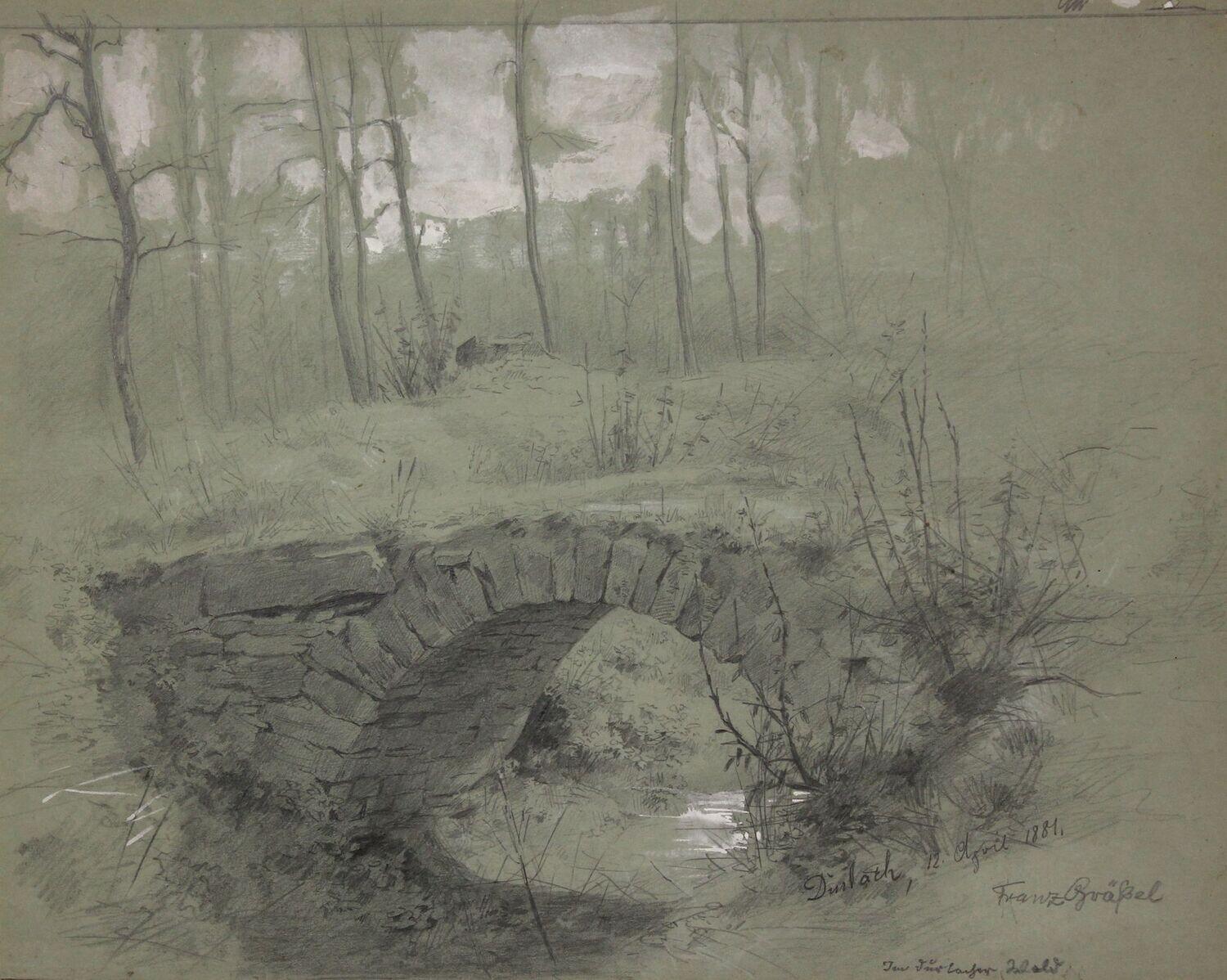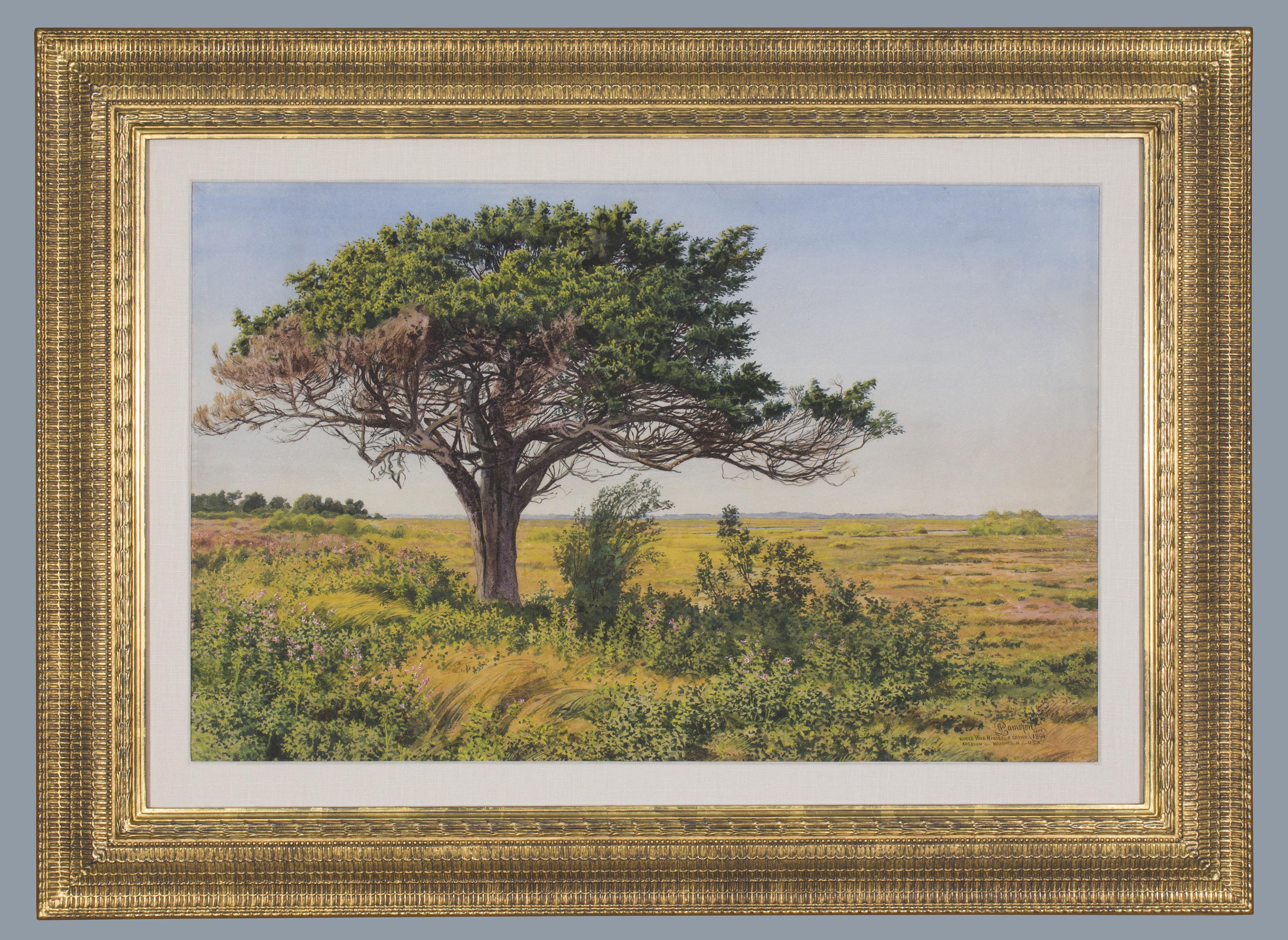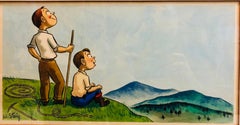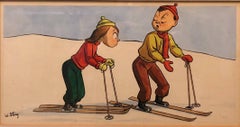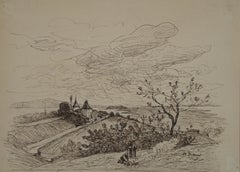
Bristlecone in Winter, White Mountains
View Similar Items
1 of 4
Ludo LeideritzBristlecone in Winter, White Mountains2014
2014
About the Item
- Creator:Ludo Leideritz (1953, Dutch)
- Creation Year:2014
- Dimensions:Height: 17 in (43.18 cm)Width: 14 in (35.56 cm)Depth: 0.25 in (6.35 mm)
- Medium:
- Movement & Style:
- Period:
- Condition:
- Gallery Location:Laguna Beach, CA
- Reference Number:1stDibs: LU57532263183
You May Also Like
- Whimsical Illustration Hiking Cartoon, 1938 Mt Tremblant Ski Lodge William SteigBy William Steig (b.1907)Located in Surfside, FLLighthearted Illustration of Outdoor Pursuits This one being cross country hiking signed "W. Steig" Provenance: from Mrs. Joseph B. Ryan, Commissioned by Joe Ryan for the bar at his ski resort, Mount Tremblant Lodge, in 1938. Mont Tremblant, P.Q., Canada Watercolor and ink on illustration board, sights sizes 8 1/2 x 16 1/2 in., framed. In 1938 Joe Ryan, described as a millionaire from Philadelphia, bushwhacked his way to the summit of Mont Tremblant and was inspired to create a world class ski resort at the site. In 1939 he opened the Mont Tremblant Lodge, which remains part of the Pedestrian Village today. This original illustration is on Whatman Illustration board. the board measures 14 X 22 inches. label from McClees Galleries, Philadelphia, on the frame backing paper. William Steig, 1907 – 2003 was an American cartoonist, sculptor, and, in his later life, an illustrator and writer of children's books. Best known for the picture books Sylvester and the Magic Pebble, Abel's Island, and Doctor De Soto, he was also the creator of Shrek!, which inspired the film series of the same name. He was the U.S. nominee for both of the biennial, international Hans Christian Andersen Awards, as a children's book illustrator in 1982 and a writer in 1988. Steig was born in Brooklyn, New York in 1907, and grew up in the Bronx. His parents were Polish-Jewish immigrants from Austria, both socialists. His father, Joseph Steig, was a house painter, and his mother, Laura Ebel Steig, was a seamstress who encouraged his artistic leanings. As a child, he dabbled in painting and was an avid reader of literature. Among other works, he was said to have been especially fascinated by Pinocchio.He graduated from Townsend Harris High School at 15 but never completed college, though he attended three, spending two years at City College of New York, three years at the National Academy of Design and a mere five days at the Yale School of Fine Arts before dropping out of each. Hailed as the "King of Cartoons" Steig began drawing illustrations and cartoons for The New Yorker in 1930, producing more than 2,600 drawings and 117 covers for the magazine. Steig, later, when he was 61, began writing children's books. In 1968, he wrote his first children's book. He excelled here as well, and his third book, Sylvester and the Magic Pebble (1969), won the Caldecott Medal. He went on to write more than 30 children's books, including the Doctor DeSoto series, and he continued to write into his nineties. Among his other well-known works, the picture book Shrek! (1990) formed the basis for the DreamWorks Animation film Shrek (2001). After the release of Shrek 2 in 2004, Steig became the first sole-creator of an animated movie franchise that went on to generate over $1 billion from theatrical and ancillary markets after only one sequel. Along with Maurice Sendak, Saul Steinberg, Ludwig Bemelmans and Laurent de Brunhofff his is one of those rare cartoonist whose works form part of our collective cultural heritage. In 1984, Steig's film adaptation of Doctor DeSoto directed by Michael Sporn was nominated for the Academy Award for Best Animated Short Film. As one of the most admired cartoonists of all time, Steig spent seven decades drawing for the New Yorker magazine. He touched generations of readers with his tongue–in–cheek pen–and–ink drawings, which often expressed states of mind like shame, embarrassment or anger. Later in life, Steig turned to children's books, working as both a writer and illustrator. Steig's children's books were also wildly popular because of the crazy, complicated language he used—words like lunatic, palsied, sequestration, and cleave. Kids love the sound of those words even if they do not quite understand the meaning. Steig's descriptions were also clever. He once described a beached whale as "breaded with sand." Throughout the course of his career, Steig compiled his cartoons and drawings into books. Some of them were published first in the New Yorker. Others were deemed too dark to be printed there. Most of these collections centered on the cold, dark psychoanalytical truth about relationships. They featured husbands and wives fighting and parents snapping at their kids. His first adult book, Man About Town, was published in 1932, followed by About People, published in 1939, which focused on social outsiders. Sick of Each Other, published in 2000, included a drawing depicting a wife holding her husband at gunpoint, saying, "Say you adore me." According to the Los Angeles Times, fellow New Yorker artist Edward Sorel...Category
1930s Naturalistic Figurative Drawings and Watercolors
MaterialsArchival Ink, Watercolor, Illustration Board
- Whimsical Illustration Skiing Cartoon, 1938 Mt Tremblant Ski Lodge William SteigBy William Steig (b.1907)Located in Surfside, FLLighthearted Illustration of Outdoor Pursuits This one being a Skiing scene, a boy and a girl on skis. signed W. Steig Provenance: from Mrs. Joseph B. Ryan, Commissioned by Joe Ryan for the bar at his ski resort, Mount Tremblant Lodge, in 1938. Mont Tremblant, P.Q., Canada Watercolor and ink on illustration board, sights sizes 8 1/2 x 16 1/2 in., framed. In 1938 Joe Ryan, described as a millionaire from Philadelphia, bushwhacked his way to the summit of Mont Tremblant and was inspired to create a world class ski resort at the site. In 1939 he opened the Mont Tremblant Lodge, which remains part of the Pedestrian Village today. This original illustration is on Whatman Illustration board. the board measures 14 X 22 inches. label from McClees Galleries, Philadelphia, on the frame backing paper. William Steig, 1907 – 2003 was an American cartoonist, sculptor, and, in his later life, an illustrator and writer of children's books. Best known for the picture books Sylvester and the Magic Pebble, Abel's Island, and Doctor De Soto, he was also the creator of Shrek!, which inspired the film series of the same name. He was the U.S. nominee for both of the biennial, international Hans Christian Andersen Awards, as a children's book illustrator in 1982 and a writer in 1988. Steig was born in Brooklyn, New York in 1907, and grew up in the Bronx. His parents were Polish-Jewish immigrants from Austria, both socialists. His father, Joseph Steig, was a house painter, and his mother, Laura Ebel Steig, was a seamstress who encouraged his artistic leanings. As a child, he dabbled in painting and was an avid reader of literature. Among other works, he was said to have been especially fascinated by Pinocchio.He graduated from Townsend Harris High School at 15 but never completed college, though he attended three, spending two years at City College of New York, three years at the National Academy of Design and a mere five days at the Yale School of Fine Arts before dropping out of each. Hailed as the "King of Cartoons" Steig began drawing illustrations and cartoons for The New Yorker in 1930, producing more than 2,600 drawings and 117 covers for the magazine. Steig, later, when he was 61, began writing children's books. In 1968, he wrote his first children's book. He excelled here as well, and his third book, Sylvester and the Magic Pebble (1969), won the Caldecott Medal. He went on to write more than 30 children's books, including the Doctor DeSoto series, and he continued to write into his nineties. Among his other well-known works, the picture book Shrek! (1990) formed the basis for the DreamWorks Animation film Shrek (2001). After the release of Shrek 2 in 2004, Steig became the first sole-creator of an animated movie franchise that went on to generate over $1 billion from theatrical and ancillary markets after only one sequel. Along with Maurice Sendak, Saul Steinberg, Ludwig Bemelmans and Laurent de Brunhofff his is one of those rare cartoonist whose works form part of our collective cultural heritage. In 1984, Steig's film adaptation of Doctor DeSoto directed by Michael Sporn was nominated for the Academy Award for Best Animated Short Film. As one of the most admired cartoonists of all time, Steig spent seven decades drawing for the New Yorker magazine. He touched generations of readers with his tongue–in–cheek pen–and–ink drawings, which often expressed states of mind like shame, embarrassment or anger. Later in life, Steig turned to children's books, working as both a writer and illustrator. Steig's children's books were also wildly popular because of the crazy, complicated language he used—words like lunatic, palsied, sequestration, and cleave. Kids love the sound of those words even if they do not quite understand the meaning. Steig's descriptions were also clever. He once described a beached whale as "breaded with sand." Throughout the course of his career, Steig compiled his cartoons and drawings into books. Some of them were published first in the New Yorker. Others were deemed too dark to be printed there. Most of these collections centered on the cold, dark psychoanalytical truth about relationships. They featured husbands and wives fighting and parents snapping at their kids. His first adult book, Man About Town, was published in 1932, followed by About People, published in 1939, which focused on social outsiders. Sick of Each Other, published in 2000, included a drawing depicting a wife holding her husband at gunpoint, saying, "Say you adore me." According to the Los Angeles Times, fellow New Yorker artist Edward Sorel...Category
1930s Naturalistic Figurative Drawings and Watercolors
MaterialsArchival Ink, Watercolor, Illustration Board
- Alfred Dumont (1828-1894) - Cerlier in Switzerland - 19thC Ink Landscape DrawingBy Alfred Paul Emil Etienne DumontLocated in Meinisberg, CHAlfred Paul Emil Etienne Dumont (Swiss, * 13. Juni 1828 in Baulmes; † 7th August 1894 in Geneva) Vue de Cerlier au lac de Bienne avec Île Saint-Pierre (Figures at an open fire, wit...Category
1860s Naturalistic Landscape Drawings and Watercolors
MaterialsPaper, India Ink
- Plan of a Part of Newport, R. I. Showing Changes... O. H. P, Belmont, Esq.Located in New York, NYPLAN OF A PART OF NEWPORT, R.I. SHOWING CHANGES IN HIGHWAYS ASKED FOR BY O.H.P. BELMONT, ESQ. The original ink and watercolor plan on paper from 1907. The plan is extremely large; if fully assembled it would measure no less than 11.5 feet in height and 6.5 feet in breadth. Segmented and backed on modern linen in four sections – each section is 70 x 39 inches. This grand oversized folding map can be folded down to four sections each 17.5 x 11 inches and stored in a modern made leather and marble paper case 18 x 11.75 x 3 inches. Text continues, "Prepared for Charles Warren Lippitt at the office of J. P. Cotton, C.E. Newport, R.I. Oct. 28, 1907." A fine manuscript plan of the Bellevue neighborhood of Newport, depicting the street layout and the detailed footprints of the area’s many mansions. The plan was produced at the behest of Charles Warren Lippett (1846-1924), who served as governor of Rhode Island from 1895-1897. The Lippett “Breakwater” mansion is also shown on this plan, situated at the southernmost tip of the peninsula. Though the circumstances are unclear, Lippitt seems to have requested the plan be drawn out of some concern for road construction proposed by Oliver Hazard Perry...Category
Early 20th Century Naturalistic More Art
MaterialsInk, Watercolor
- Ink Drawing of a Farm House by Houston ArtistBy Toby TopekLocated in Houston, TXInk drawing of a country house surrounded by trees. The work is done by Houston, Artist Toby Topek. It is signed by her and dated along with an artist stamp on the back of the framed work. It is framed in a silver frame with a black matte. Dimensions without Frame: H 9.5 in x W 17 in. Artist Biography: Born in Brooklyn, New York, Topek grew up in Houston. She has studied archaeology, art, architecture, the environment, culture and history in Mexico, the Mediterranean, North Africa, Near East, Adriatic, Brazil, and Canada. She lived and worked in Greece and Turkey part–time, 1984– 1988. Her work has been exhibited at the Whitney Bank Museum Branch–Houston, Contemporary Arts Museum Houston, Fort Worth Modern Art Museum, Art Museum of South Texas, Corpus Christi, Galveston Art Center, the International Sculpture Conference Houston, College of the Mainland, Lawndale Art Center, Diverseworks, Women and Their Work-Austin, Transco Gallery and Project Row Houses. In 2000, she completed eleven 10 foot marble mosaic medallion...Category
1950s Naturalistic Landscape Drawings and Watercolors
MaterialsInk
- The Fiddler, Small Ink Drawing by John BauerLocated in Stockholm, SEThis intricate ink drawing by John Bauer, measuring approximately 8 x 5 cm and presented in an oval format, encapsulates a profound expression in its modest size. It features a minus...Category
1910s Naturalistic Figurative Drawings and Watercolors
MaterialsOak, Paper, Ink
